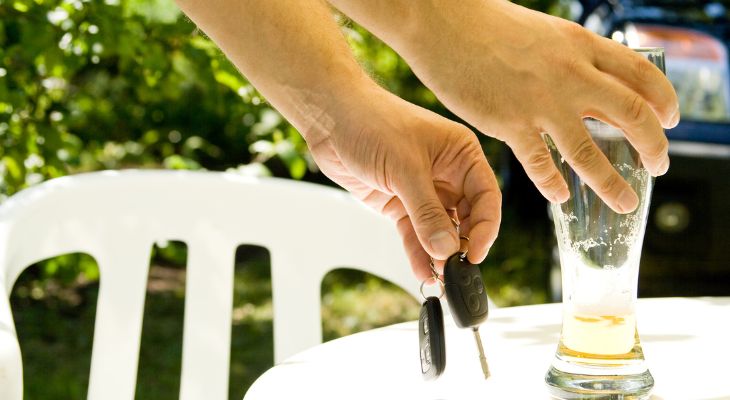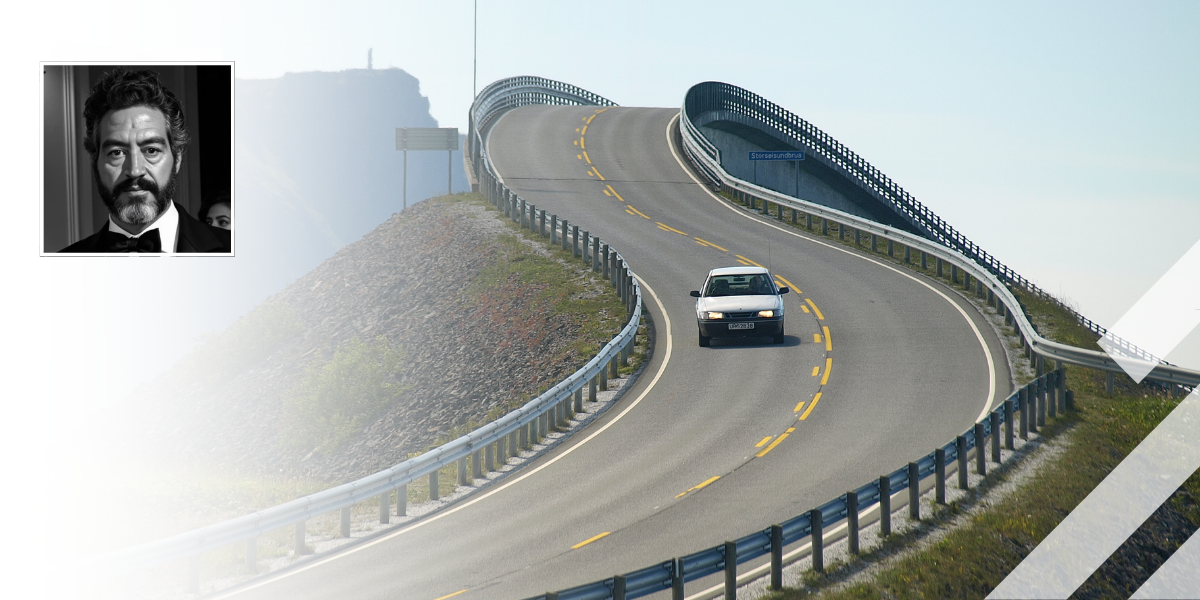Since the return to normality post-pandemic, the numbers of major traffic accidents in Europe that have resulted in human beings being killed or seriously injured has slightly increased. Although this is not the case in every country (Germany has seen a steady reduction in KSI statistics for over 20 years, for example), in this two part feature Intertraffic spoke with representatives of the Spanish Roads Association (AEC) and first the European Transport Safety Council (ETSC) in an attempt to uncover some of the reasons behind this potentially worrying trend
It’s fair to say that vehicles are a great deal safer now than they were in 1984. Indeed, they are a whole lot safer than they were in 2014. So why, then, have we seen a slight “uptick” in the numbers of people that have been killed or seriously injured (KSI) on our roads?ETSC
Admittedly, in most countries that have experienced an increase it’s been comfortably single figure percentages, and it’s by no means in every country across the Europe, let alone worldwide, but after two decades where the KSI statistics promisingly decreased year on year, it’s a trend that is concerning transport safety experts.
So what are the reasons for the increase? An over-reliance on technology – the belief that if you are behind the wheel of a 2022 BMW 3-series that you are infallible? Is it that drivers are now so distracted by their close proximity to information and entertainment that they are spending dangerously little amount of time concentrating on the task at hand? Or is it that drivers are taking advantage of a dip in available enforcement resources and believe that they are less likely to be caught speeding or be stopped for a drink-driving check?
After two decades where the KSI statistics promisingly decreased year on year, the slight upward trend is concerning transport safety experts
THE IMPACT OF DRINK-DRIVING ON ROAD SAFETY

The first of those may be conjecture, but there’s evidence to suggest that the latter may be true. In a perception survey conducted by Brussels-based ESRA (E-Survey of Road users Attitudes) in 2018, an average of one in five drivers who were asked if they had driven after drinking alcohol in the last 30 days admitted to doing so.
The worst offenders were Portuguese, Swiss and Belgian drivers, 33% of whom had drunk and driven at least once in the last month. At the other end of the 20-country scale, just 1 in 20 Hungarian motorists had taken to the road after consuming an alcoholic beverage. With the Netherlands, Sweden and Norway topping the most recent Road Safety Scores list, it all adds up to make a confusing, irregular picture, consistent only in its consistency. It’s the responsibility of people such as Dudley Curtis, communications manager at the European Transport Safety Council (ETSC), to extract a clearer picture from the gamut of sometimes conflicting data.
“The problem is, as anyone that has followed road safety over a few years, is that it's not the same in every country. And the reasons within countries are going to be different. It’s difficult to put your finger on the reason why this [trend] may or may not be happening,” he says.
“The first thing is we've had this very unusual blip in the data if we're looking over the last 10 years. We saw good progress in 2012 and 2013 with an 8% reduction in KSI, but then for the rest of the decade, 2014-19 there was some stagnation with just 6% over that five year period,” he explains.
“And then, because of COVID, of course, you get a massive drop in 2020 and 2021. But then as things start to get back to normal we start seeing an increase. In some countries we were seeing an increase in speeding due to the open roads, but the other thing is that police enforcement was put on to other tasks. Is it a question of whether police enforcement has come back to the task of road safety? We published an enforcement report in March 2023, and one of the key things it covered was if drivers felt that they were likely to get checked for speeding or drunk driving while on the road.”
In some countries we were seeing an increase in speeding due to the open roads, but the other thing is that police enforcement was put on to other tasks.
ENFORCING SAFE DRIVING

The findings of the ESRA report make for puzzling reading. A third of Belgian drivers had drunk alcohol and driven in the previous 30 days, and yet Belgium, unlike the UK for example where there has to be a valid reason to stop a motorist, the police can just stop all the drivers on a particular road at a particular moment to perform checks for potential offences.
According to a
report published earlier in 2024 by the ETSC, significant weaknesses in the enforcement of road safety rules are holding back progress on reducing road deaths in Europe. The report focuses on the state of enforcement of speed limits and seatbelt wearing, as well as rules on drink-driving and use of mobile devices at the wheel between 2010 and 2019 across Europe. On the report’s publication, Ellen Townsend, ETSC’s policy director, commented:
“Thousands of lives could be saved in the EU every year if drivers stuck to existing rules on drink-driving, speeding, seatbelt wearing and mobile phone use. Good enforcement is absolutely critical to this. Without regular, highly visible and well-communicated efforts to enforce the law, Europe will not reach its target to halve road deaths and serious injuries by 2030. National governments must act now, and the EU can play its part by making sure cross-border traffic offences are routinely followed up.”
However, one common problem that safety-centric organisations are faced with is despite their best efforts, there will always be hardcore, repeat offenders who don't wear seatbelts, are willing to drink before driving and drive too fast - often all three at the same time.
Thousands of lives could be saved in the EU every year if drivers stuck to existing rules on drink-driving, speeding, seatbelt wearing and mobile phone use. Good enforcement is absolutely critical to this
Says Curtis: “These are the areas where we need to see a consistent effort being made, and that includes enforcement and campaigns focused on drink driving. One of the issues we talk a lot about is how you tackle the hardcore group of offenders. So one of the solutions to put repeat offenders in an alcohol interlock rehabilitation programme, ideally with some psychological follow up because there’s a psychological aspect to people's relationships with alcohol. Every time you get in your car, you have to blow into a device and be sober in order to drive. This is effective and we know that people who follow these rehabilitation programmes repeat-offend less often. Ireland is now looking at this and Belgium, Poland and Lithuania has it already.”
ARE DRIVERS LOSING FOCUS?

Finally, on to the thorny issue of driver distraction. Be it mobile phones, overly complicated dashboards, vapes or loose pets, drivers are never too far away from something that can take their eyes off the road for a dangerous amount of time. The aforementioned ETSC report also looks at the subject of vehicle regulation, with driver distraction being one of the sub-topics. Of particular relevance the report suggests that motorists whose vehicles feature advanced driver assistance systems (ADAS) are the ones most likely to be distracted.
Be it mobile phones, overly complicated dashboards, vapes or loose pets, drivers are never too far away from something that can take their eyes off the road for a dangerous amount of time
“New technical rules for ADAS are being finalized in Geneva, at the World Forum for Harmonization of Vehicle Regulations (WP.29) of the United Nation Economic Commission for Europe (UNECE), literally as we speak,” enthuses Curtis.
“The EU will take this bit of regulation when it's finished from the UNECE. It’s looking at distraction warnings for these driving assistance systems such as Tesla’s Autopilot, so not full automation. The system will be better than the kind of basic level that we're going to have from July that will take into account more areas where the driver might be looking, Unfortunately at the moment it’s looking like they're going to have five seconds before the system kicks in – we think that is too long because on a motorway you've already travelled quite some distance in five seconds. Nonetheless,” he continues, “that that may be some sort of progress, but it's dealing with the symptom and not the cause. Maybe it’s time for the mobile phone companies and the car companies to do a lot more to make it even clearer to people that using your phone while driving is just not safe.”
YOUR SAFETY IN YOUR OWN HANDS

The notion that using a hands-free device is inordinately safer than holding a phone in your hand is also something of a myth, it would appear.
“The problem is that from a psychological point of view, even talking on a hands free kit, which is legal in most countries, is almost as distracting as if you're holding the phone because you're mentally somewhere else,” explains Curtis. “The same bit of your brain that should be concentrating on the driving task is thinking about that audio Zoom meeting you're having and whether you met your sales targets this quarter. People use the argument of when people are talking to a passenger in the car, but that has been proven to be different, because the people in the car are also looking at the same view and they have some situational and spatial awareness of what's going on. They're actually like extra eyes and ears for you.”
The problem is that from a psychological point of view, even talking on a hands free kit, which is legal in most countries, is almost as distracting as if you're holding the phone because you're mentally somewhere else
It’s common knowledge that motorways are much safer than urban and rural roads, but in Europe particularly, building more motorways to solve the safety problem just isn’t practical for dozens of glaringly obvious reasons. So what is the answer?
“Motorways are clearly very safe,” responds Curtis. “There are no T-junctions, pedestrians or cyclists. If you go from having almost no motorways to having some motorways, you’ll get a big safety improvement, as we have seen in Spain. But look at the records of countries that were safe before and are still getting safer, Norway and Sweden for example. In 2023 Oslo had one road death last year. They've got a slightly bigger population than Dublin and Dublin had 15. Oslo has gone almost entirely 30km/h, they've basically been discouraging cars from being in the city centre but they're constantly working on the infrastructure, they've got school zones, they've got safe routes to schools, they're just attacking the problem from all sides.”
That is an approach that Curtis admires greatly.
“It’s what you need to do with road safety. There's not one silver bullet, unfortunately, there's a whole lot of different things. We talk a lot about the safe system approach, but we have to look at the drivers, we have to look at the vehicles, we have to look at the infrastructure and we have look at post-crash care – and we have to improve them all,” he concludes. “We know mistakes will happen, but if a mistake happens, it shouldn't result in somebody's death.”







